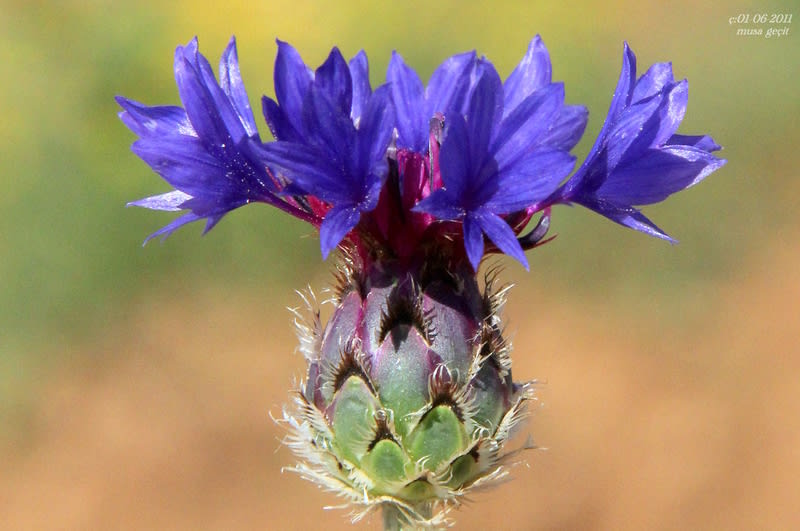Persian Cornflower, Low Cornflower, Irans Cornflower
Centaurea depressa

🌿 Morphology
🌞 Growing conditions
🌍 Origin and family
🌾 Uses
Warning: Despite the care taken in writing this sheet, it is essential to cross-reference sources before using or consuming any plant. When in doubt, consult a qualified professional
Permaculture uses
Primarily used as an ornamental plant, it attracts pollinators like bees and butterflies to the garden. The seeds are edible, but are small and difficult to harvest in quantity. No significant medicinal or culinary uses are generally reported.
Permapeople description
Centaurea depressa is an annual plant species native to the Middle East and Central Asia. It is known for its blue or purple flowers and is often considered a weed in agricultural settings. It grows to about 15-40 cm tall.
Botanical description
Centaurea depressa is an annual flowering plant in the family Asteraceae. It typically grows to a height of 12-24 inches. The plant features blue, thistle-like flower heads, and deeply lobed, grayish-green leaves. It is native to Iran and surrounding regions. The plant prefers full sun and well-drained soil. It spreads via seed, and can self-seed prolifically.
Companion planting
No specific beneficial or detrimental companion planting relationships are widely documented. As a pollinator attractant, it generally benefits plants that require insect pollination. Monitor for potential competition if allowed to self-seed extensively.
Propagation methods
Propagated primarily by seed. Direct sowing in the garden in spring or fall is common. Seeds can also be started indoors 6-8 weeks before the last frost and transplanted once the weather warms. Self-seeding is common.
History and traditions
Originating from Persia (modern-day Iran), Centaurea depressa has been historically used as an ornamental plant in gardens across the region. Its vibrant blue flowers have made it a popular choice for adding color and texture to floral arrangements. It doesn't have significant traditional medicinal or cultural uses documented.
Usage calendar
Sow seeds in spring or fall. Flowers bloom in summer (June-August). Collect seeds in late summer or early fall once the seed heads have dried.
